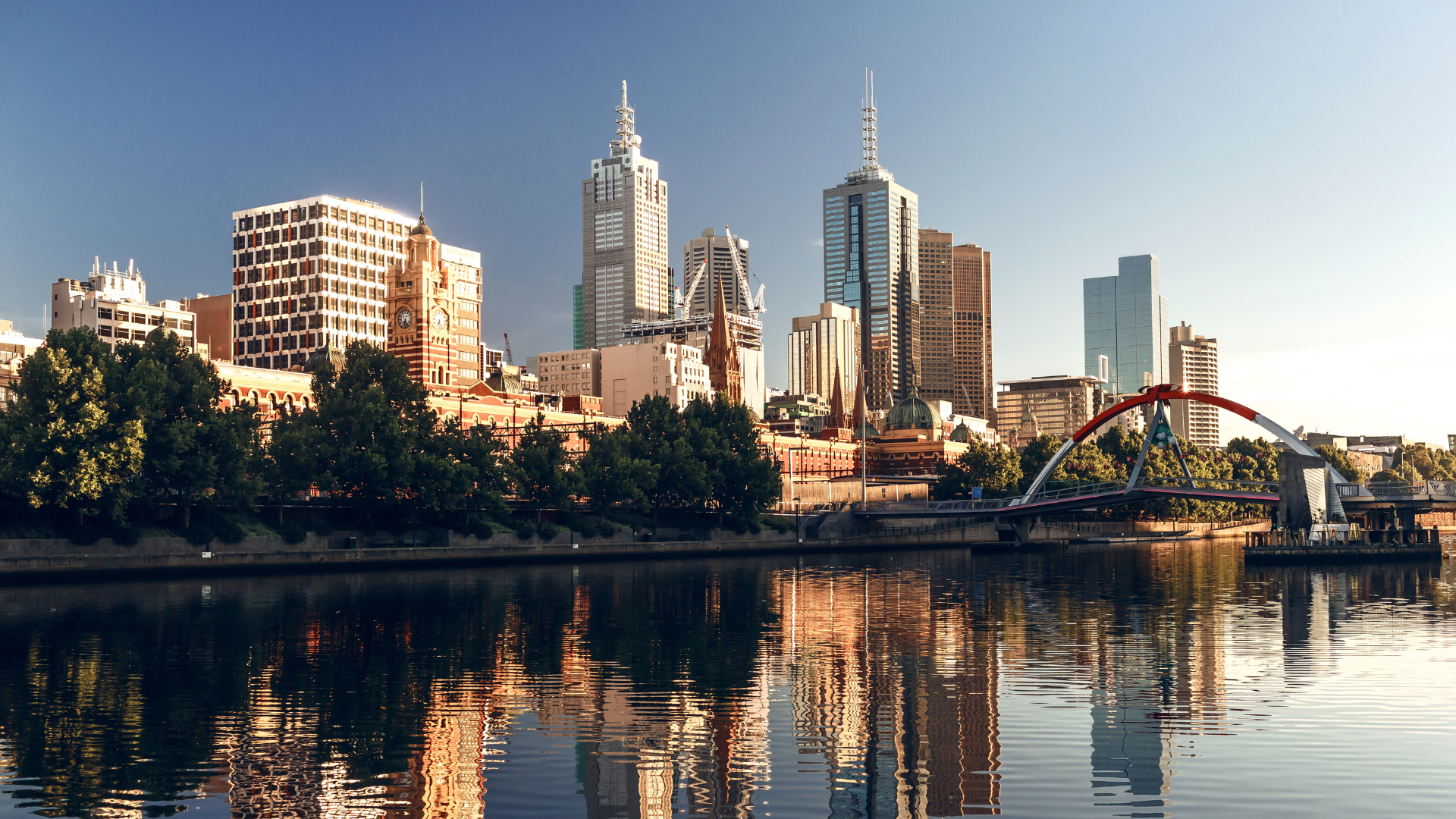Safe Conversations – Part three
An interview with Mark Mackey, Metro Tunnel Project
Part three of our National Safe Work Month industry conversations is with Kelvin Hay, HSE Project Manager for GHD working on the Level Crossing Removal Projects. Kelvin has over 10 years of experience within the safety industry, having worked in mining, infrastructure, construction, rail, electrical, communications, the military and information security management.
GHD are in partnership with AECOM as technical advisor for the Level Crossing Removal Project. The program of works includes providing technical services to support the LXRA with removing around 50 level crossings from the Melbourne suburban rail network. GHD are delivering technical investigations, consultation, planning and design for level crossing sites across the city.
See below as Kelvin shares his thoughts on National Safe Work Month and its importance.
Tell us about National Safe Work Month – what it is?
For me it’s very much what’s happening out there in the big wide world of safety and how we highlight it for our employees, so for me it’s not about one month, it’s about continually throughout the year. But we use National Safe Work Month to highlight in the one-month period, everything that’s happening in the country, in the state and what we as an organisation can do about safety - in a simple format.
What have you loved seeing about National Safe Work Month in the industry so far?
The Worksafe events have been good – but they are usually for safety people –I think we can do more. Not just through this month but throughout the year.
The poster system we use has been really good, I’ve also booked an afternoon tea for all my employees – to close off the month. We will be doing a quick presentation on what we call ‘Stop Work Authority’ it’s a very simple concept – if they feel as an individual that they are unsafe or see something unsafe or are about to do an activity that is unsafe, they can stop the work. There is a mechanism to do this through their line manager if they are in the office, or a site safety supervisor if they are on site. We will hand out the cards they can keep in their wallets, giving them the step by step guide. Our employees are empowered to speak up if it’s unsafe.
Long gone are the days of harden up or stop complaining. I don’t have time for it.
We also hand out stress balls, so that people can take away and it will highlight safety to them every time they see it.
Anything that you’ve seen that you’re not fond of?
If I’m being honest, I’ve not seen enough. There’s not enough out there to show what it is, there are people in my parent company who didn’t even know it was Safe Work Month. There are no TV or radio adverts. If I look around the street there’s no public advertising.
We need to have a poster on every construction site – with a message around safety.
What about adverts in Victoria, following several recent accidents and violations
Occasionally you see the odd advert from Worksafe – but they target certain actions. If it doesn’t directly affect them, people switch off. We need messages that relate to everyone. That gets people involved. A spot the hazard advert would be great – two ads during the commercial break.
What is your business doing about National Safe Work Month?
In our business, we have put out a lot of posters throughout the building. Every time we walk past and we see people looking at the posters, we stop and have a conversation about what the messaging means, so they have a more in depth understanding of safety.
At troop level during the month, we have gone into details during site inductions, highlighting what safety is, what it means to individuals and what safety champions represent.
The big messages to get across – individual people have accountability, not just under legislation, but a moral and ethical accountability. To look after their own safety and others that are affected by what they do; and not just at work, but also at home. Most people think health and safety is just occupational. It is, in relation to the legislation, but it shouldn’t stop when you leave the workplace. It should be always present in your day-to-day activities, from catching trains, trams, to doing things when you’re at home – safety for yourself and for your family should also be priority.
That’s one of the big things that is missed, “I’ve finished work, I don’t have to be safe anymore.” When that’s not the case.
So how do we imprint that into people’s minds
I do it through the inductions or training sessions, I get people to identify hazards using a ‘common sense’ approach. So, I explaina hazard is anything that has the potential to cause Harm.I use a number of picture slides. The first four are work related, the remaining five are home related, which is now getting people to also think about hazards at home.
It’s those very small things that make people realise safety is 24 hours a day, 7 days a week.
Do you think the best way to teach this is to have them work it out themselves in front of you?
One of the biggest problems is that if you talk non-stop or do a death by PowerPoint, if we’re trying to drum safety into them, people will just switch off.
If we explain safety at a personal level, it’s your family and friends at your BBQ and you want to make sure they have a good time, how do you do that? You maintain the safety aspect. People take these real-life scenarios on board – they think “I want my friends to be safe when they come for a BBQ, I’d feel mortified if I hurt someone at my place.”
How does Christmas affect the workforce in relation to safety?
So, there is more emphasis on drugs and alcohol over Christmas, which needs to be managed and we need to educate our workforce, but there’s also fatigue at this part of the year. When people are working at full steam, they are full of adrenaline, when they go on holiday, the adrenaline stops, this is when fatigue really kicks in. They get colds, coughs and illness comes in. At Christmas you have people slowing down and going on holiday. Some are short breaks others are rather long. So, it’s not just the slowing down but it’s also the ramping up after Christmas.
You expect those people to just switch back on, when they come back to work. In my opinion there isn’t enough staged return to work – you go from zero to a thousand miles an hour. People then take shortcuts. Incident rates increase up to Christmas and then even further up after Christmas, because people aren’t switched on.
We need to keep an eye on how we control and manage the workforce to allow them to slowly return and reinvigorate them for the following year. It’s also summer, with heat playing a massive factor.
Is October the right time for National Safe Work Month?
I think we should do it twice a year, probably June time as well, we’re into the winter months which requires a different approach. As we approach the end of the financial year, people want more work done before the year end and with budgets to spend; this can lead to an influx of workers on site. These new workers don’t necessarily understand safety.
On the flipside, we can have projects slowing down works. This is a perfect time for people to see what they need to do for the new financial year and hopefully with larger new budgets.
Do you think technology will be a major factor to improve safety?
The technology has to help us do the job, not take over. I’ll give you an example; there’s a major organisation that is looking at a camera system that identifies when people are entering danger zones, each worker has a piece of equipment attached to their hard hats that vibrates once they are in a danger zone. This will be a warning device that will be very useful for people on their mobile phones. Most people walk around whilst on the phone. This can lead to accidents which shouldn’t occur, usually with plant and machinery. I use videos of people using mobile phones and bumping into things when inducting workers, showing that technology can produce more hazards.
The eradication of paper is a necessity. Mobile phones screens are too small, so we are looking at iPads, but they are expensive, so we are looking at alternatives, that can allow people to sign in and out, take photos and ensure compliance on site.
As a Recruiter and HSE Project Manager, what can we do to push safety forwards?
Our biggest issue is that safety is not sexy. Why do people get into safety? Usually it’s people on the tools who get injured and can no longer be on the tools, so they go into safety. But is that the right reason to go into safety?
For me if you get into safety, it’s because it’s a passion. In my eyes it’s a vocation not a job. We need to have people that actually want to help people, who have a flair for the legislation, not just think that it’s an act of parliament, but a duty of care.
People that come from the tools have a great technical knowledge. I think we need to have people awareness and be Cert IV qualified to get into the profession. Then have a passion and are guided properly, which I don’t think we do enough of. It’s a symbiotic relationship between caring and knowing the legislation. HSE Managers need to guide junior safety professionals and upskill people.
As a recruiter, the people that come forward need to be passionate and you need to advocate for the right people to be put forward and discuss with hiring managers the reason they are the best choice. We need people that are process driven as well as personal, so they can explain why we do things, so that we can get people to become Safety Champions.





